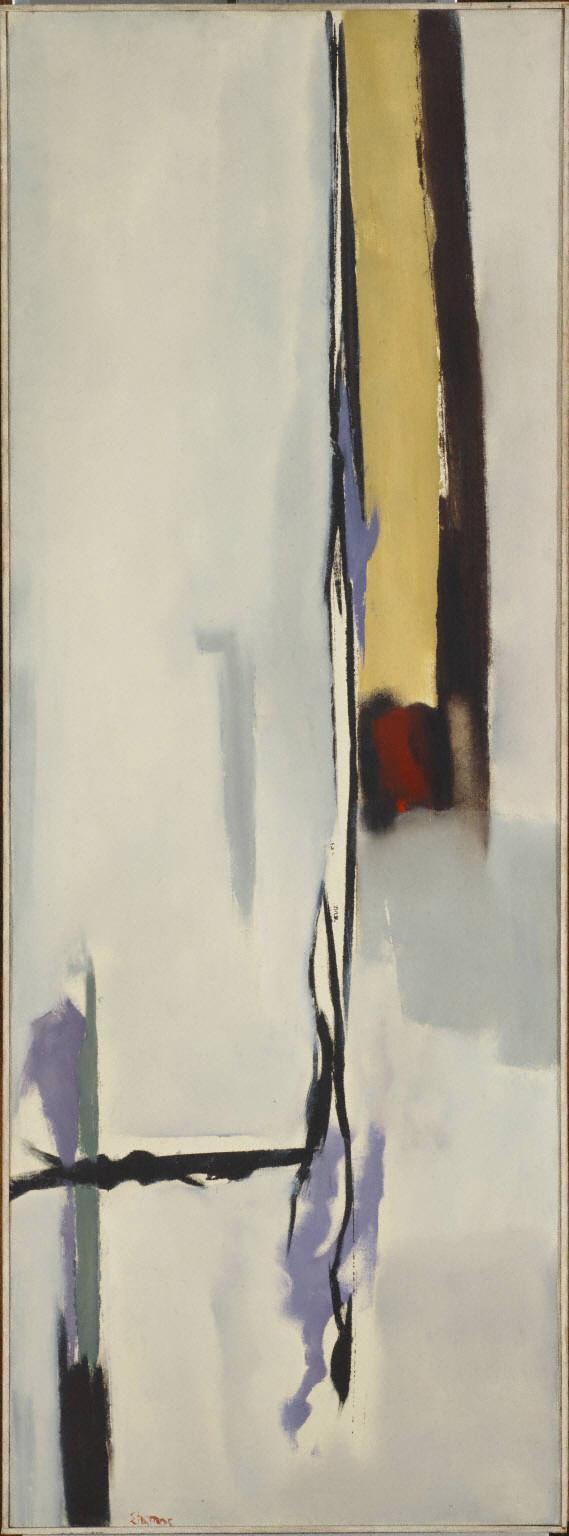Lupine
Theodoros Stamos ( 1953 )

Theodoros Stamos was always attracted to Eastern art, particularly the calligraphic works of China and Japan. Living in New York, Stamos had access to the Metropolitan Museum of Art’s fine collection of Asian art, and spent a good deal of his time there educating himself. He remarked, “Eastern thought teaches us that things are created by the mind rather than the mind perceived existing things.…In such a process, art becomes a kind of memory picture based on past experience.” Stamos believed that Eastern art achieved a spiritual goal.
Looking beyond the art of China and Japan, Stamos also became engrossed in the work of James Abbott McNeill Whistler, whose tonalist arrangements of color harmonies were rooted in Asian art. These influences, both ancient and modern, greatly impacted Stamos’s work, and between 1949 and 1955 he focused primarily on creating his own works of art based on the principles of Asian art and Whistler’s paintings. Lupine, painted in 1953, exemplifies this period of the artist’s life. Lupine is an exaggeratedly long canvas, reminiscent of Chinese and Japanese calligraphic scroll paintings. His colors—bits of yellow, purple, red, green, and black against a neutral background—bleed together seamlessly, allowing the color to become the subject matter; there is no hint of brushwork. Stamos was trying to achieve a moment of Zen—of connectedness between all individuals and the universe—within this painting, blending spirituality and color to create harmonious art.